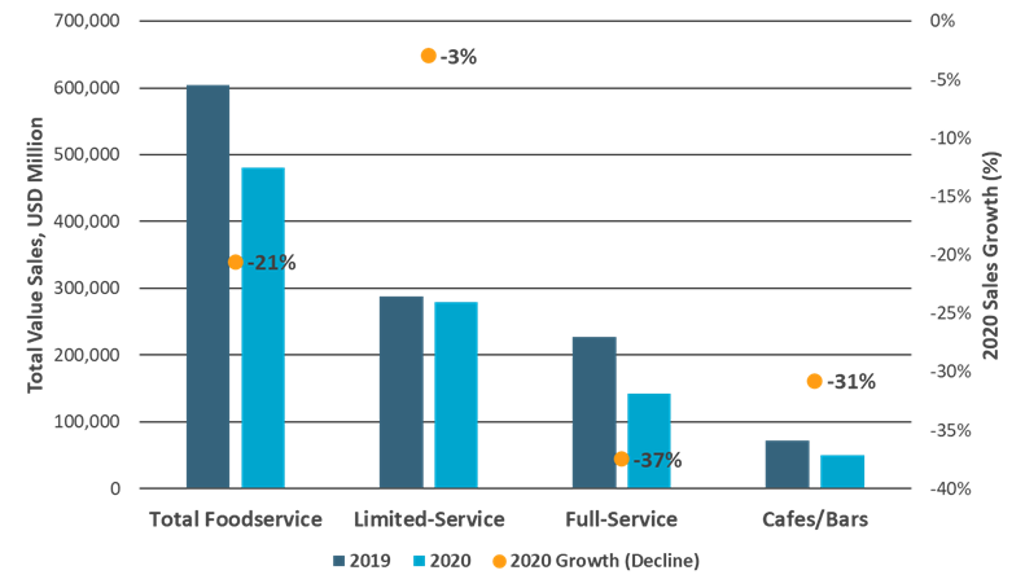As the Coronavirus (COVID-19) pandemic began to take hold in the US in March 2020, thousands of restaurants were quickly forced to close, including many that will unfortunately never reopen. Overall, restaurant sales in the US declined sharply in 2020, about 21% for the industry at large. While the innovations and adaptations in response to the pandemic were diverse, not all will ultimately have a lasting impact on the industry. Some innovations like DIY meal kits and restaurants acting as grocery suppliers ultimately lack the user base to sustain long-term adoption in the industry. Others such as contactless payments and delivery-friendly menus are likely to persist long after the pandemic subsides. While only time will tell which brands and innovations will ultimately have the greatest success, it is certain that innovation within the restaurant industry has taken a new form as a direct result of the COVID-19 pandemic and the ways in which it has changed the world around us.
US Consumer Foodservice Sales by Category 2019 vs. 2020
Source: Euromonitor International Consumer Foodservice Data
Menu innovation
Throughout the pandemic, many restaurant brands increasingly focused on a set of core products that were already popular with consumers. While some restaurant brands did introduce new products in 2020, menu innovation in the industry at large stalled. Instead of sampling new and exciting products at restaurants, consumers cooked at home with greater frequency instead, choosing to experiment with new flavours in their own kitchens. Brands like McDonald’s and Taco Bell pared-down menu options to focus on consumer favourites and delivery-friendly items. Many other smaller and independent brands implemented similar strategies. Despite these short-term reductions, menu innovation is likely to return in force following the pandemic, as consumers are eager for new experiences outside the home.
Digital insights are integral to innovation
With digital orders more than doubling across nearly every category of foodservice in 2020, restaurants were given access to vast quantities of new consumer data that help operators to better understand consumer behaviour and preferences. Ultimately, the expanded access to consumer data will lead to more predictive innovation in the restaurant industry, whereby restaurants will be able to more easily personalise offers and develop new products that they know consumers will like. This will be of particular importance in the menu space, as menus begin to expand and restaurants feel more comfortable with experimentation following the pandemic. Though there were many short-term implications for the rise in digital ordering seen in 2020, such as forcing restaurants to adopt digital capabilities, the implications for personalised offers and targeted innovation are likely to represent a permanent shift within foodservice.
An evolving ecosystem
The acceleration of digital strategies in foodservice, and particularly the success of third-party ordering and delivery services, is reshaping the foodservice infrastructure. Throughout the past year and more than ever before, the smartphone now serves as a primary vehicle for commerce for consumers. The rise of third-party delivery services has increased consumer access to many different types of food provider, including restaurants, grocers, convenience stores, and others. Restaurants are having to compete with new players because it is just as easy for consumers to order restaurant food delivery as it is for them to order meal ingredients and groceries from their phones. Differentiation is a new concern when location and accessibility are less prohibitive for consumers. Hybrid restaurant models that place additional emphasis on digital strategies are becoming more common, and brands like Chipotle are redesigning store layouts to more efficiently accommodate digital order preparation and fulfilment. This focus on hybridisation and dedicated space for digital order fulfilment are likely to become the norm in the restaurant industry over the long-term.

